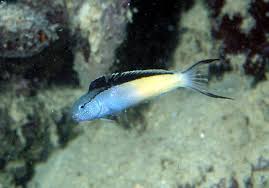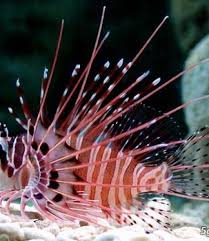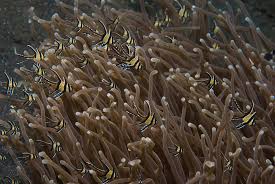Dragons have long been a central symbol in cultural, spiritual, and philosophical traditions across the world, but in Chinese belief systems, they hold a unique position as guardians of harmony between humans and nature. Unlike the Western perception of dragons as destructive creatures, Chinese dragons (lóng, 龙) are benevolent beings that control natural forces, ensuring balance and prosperity.
This deep connection between dragons and nature reflects traditional Chinese worldviews that emphasize the interdependence of human life and the environment. From ancient mythology to modern ecological perspectives, dragons symbolize the dynamic relationship between people and the natural world. This article explores the role of dragons in the intersection of human existence and natural elements, including water, land, seasons, and cosmic energies.
1. Dragons as Guardians of Natural Elements
1.1. The Role of Dragons in Controlling Water
Water is essential to life, and in Chinese mythology, dragons are its supreme rulers. They are believed to live in rivers, lakes, and oceans, controlling rainfall and water flow.
- The Four Dragon Kings (四海龙王): Each Dragon King governs one of the four seas surrounding China, ensuring that the water cycle remains in balance.
- The Dragon and Rainfall: Ancient Chinese communities performed rituals and prayers to dragons to summon rain during droughts.
- The Dragon and Floods: When rivers overflowed, it was often seen as a sign of a dragon’s anger or imbalance in human-nature relationships.
The dependence on dragons for water symbolizes the idea that human prosperity relies on respecting and working with nature rather than against it.
1.2. The Dragon Veins in Feng Shui
Feng Shui (风水), the traditional Chinese practice of harmonizing spaces with natural energy, incorporates the concept of dragon veins (龙脉). These are believed to be invisible energy lines in the land, similar to ley lines in Western geomancy.
- Mountain Ranges as Dragon Bodies: Large mountain chains are seen as the spines of sleeping dragons, and their placement is crucial for determining auspicious locations for settlements and agriculture.
- Dragon’s Breath (Sheng Qi, 生气): The energy that flows along these veins brings vitality to the land, influencing the prosperity of cities and homes.
This belief reinforces the idea that humans must respect the natural landscape to maintain harmony and abundance.
2. The Dragon’s Connection to Seasons and Agriculture
2.1. Dragons and the Lunar Calendar
The Chinese calendar is deeply intertwined with dragon symbolism. Seasonal changes, which affect agriculture and daily life, are often depicted in dragon-related myths.
- Spring Dragon Festival: In early spring, Chinese farmers celebrate the “Dragon Head-Raising Day” (龙抬头) to welcome favorable weather for crops.
- Dragon Dance in Agricultural Rituals: The iconic dragon dance, performed during major festivals, is meant to invoke good harvests and natural harmony.
2.2. Dragons as Symbols of Agricultural Prosperity
Since early civilizations, the success of agriculture has depended on the balance of natural forces. Dragons, as nature’s guardians, play a role in:
- Predicting Weather Patterns: Folklore suggests that observing dragon movements in the sky (cloud formations) could predict upcoming storms or droughts.
- Irrigation Systems Inspired by Dragons: Ancient Chinese water management techniques, such as the Dujiangyan irrigation system, were based on principles aligned with dragon mythology—controlling water flow rather than obstructing it.
These stories emphasize that human survival depends on understanding and adapting to natural forces rather than trying to dominate them.
3. The Dragon’s Role in Balancing Yin and Yang
3.1. The Cosmic Balance of the Dragon and Phoenix
The dragon is often paired with the phoenix (凤, fèng) to symbolize cosmic balance:
- The Dragon (Yang, 阳): Represents strength, activity, and the heavens.
- The Phoenix (Yin, 阴): Represents gentleness, passivity, and the earth.
Together, they illustrate the need for balance between dynamic and nurturing forces, reflecting Daoist (Taoist) beliefs in the natural equilibrium between human actions and the environment.
3.2. The Dragon in Daoism and the Natural Order
Daoism, one of China’s major philosophical traditions, emphasizes following the Way of Nature (Dao, 道). Dragons embody this concept by flowing with natural energies rather than resisting them.
- The Dragon as the Ultimate Symbol of Wu Wei (无为): Wu Wei means “effortless action”—the idea that one should act in harmony with nature rather than against it.
- Dragon Immortals in Daoist Myths: Many Daoist legends tell of sages who, by understanding nature’s principles, transformed into dragons and ascended to immortality.
This teaches that those who respect and align with nature will find wisdom and longevity.
4. Dragons as Mediators Between Heaven and Earth
4.1. The Dragon as a Messenger of the Heavens
Dragons are often depicted as celestial beings that link humans to the divine. They are associated with the Mandate of Heaven (天命), which determines the legitimacy of rulers.
- Imperial Dragons: The Chinese emperor was considered the “Son of the Dragon,” ruling with divine authority.
- Heavenly Dragons and Weather Control: Myths tell of dragons carrying messages between the sky and the earth, explaining natural disasters as signs of disharmony.
4.2. The Dragon Gates and Transformation
One of the most famous dragon-related legends is The Carp Leaping Over the Dragon Gate (鲤鱼跃龙门):
- It tells of a carp that swims upstream against strong currents. If it successfully jumps over the Dragon Gate waterfall, it transforms into a mighty dragon.
- This story symbolizes perseverance, self-improvement, and the idea that humans, like nature, must undergo transformations to achieve greatness.
The legend reflects the idea that humans and nature are not separate but part of a continuous cycle of growth and change.
5. Modern Perspectives: The Dragon and Environmental Harmony
5.1. The Dragon as an Ecological Symbol
In modern times, the dragon has become an ecological icon, symbolizing sustainable living and environmental awareness:
- Dragon-Themed Conservation Efforts: Some Chinese environmental organizations use dragon imagery to promote harmony between development and nature.
- Dragon-Inspired Architecture: Green buildings and urban planning projects often incorporate dragon motifs to reflect Feng Shui principles.
5.2. The Dragon in Climate Awareness
As climate change becomes a global concern, some scholars and cultural leaders advocate for a return to dragon-inspired philosophies:
- Respecting Water Resources: The traditional belief in dragons as water protectors encourages sustainable water management.
- Preserving Sacred Dragon Lands: Many forests, rivers, and mountains named after dragons are now conservation sites.
By drawing from ancient wisdom, modern societies can find ways to coexist with nature rather than exploiting it.
Conclusion
Throughout Chinese history, dragons have been powerful symbols of the deep connection between humans and the natural world. Whether as rainmakers, guardians of the land, or cosmic mediators, they remind us of the importance of balance, respect, and adaptation.
Even today, dragon mythology continues to shape ecological and cultural practices, inspiring people to live in harmony with nature. In a time when environmental sustainability is more important than ever, the wisdom of the dragon offers timeless lessons on how humanity can thrive without disrupting the delicate balance of the world.
The dragon’s presence in both ancient and modern perspectives reaffirms a profound truth: humans and nature are not separate forces, but two parts of an interconnected whole, forever linked through the wisdom of the dragon.










